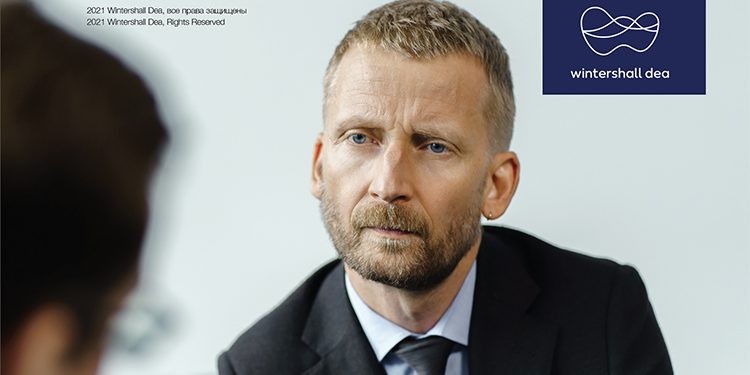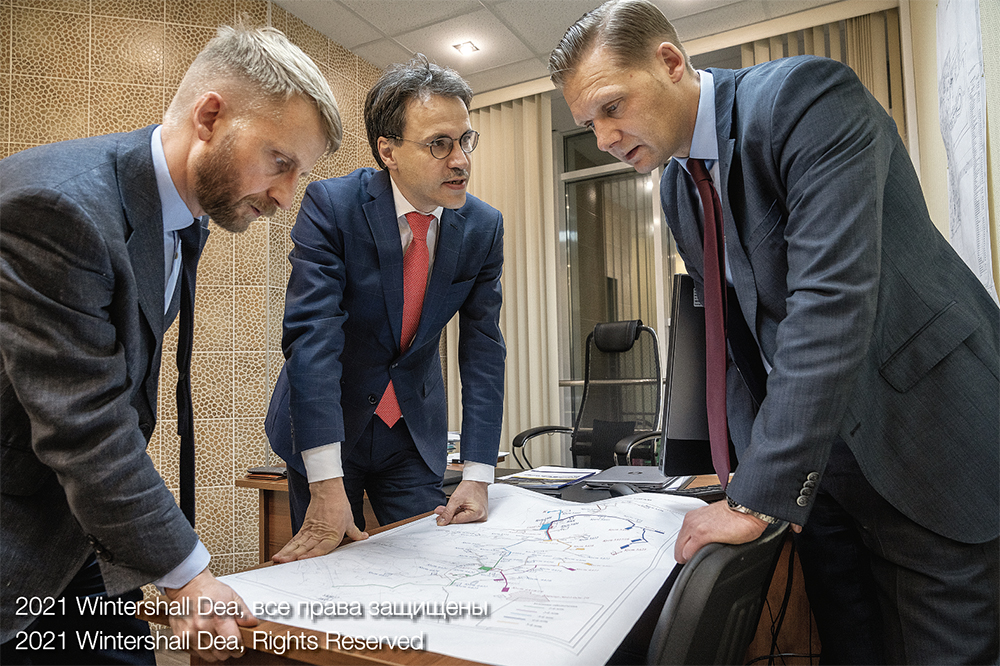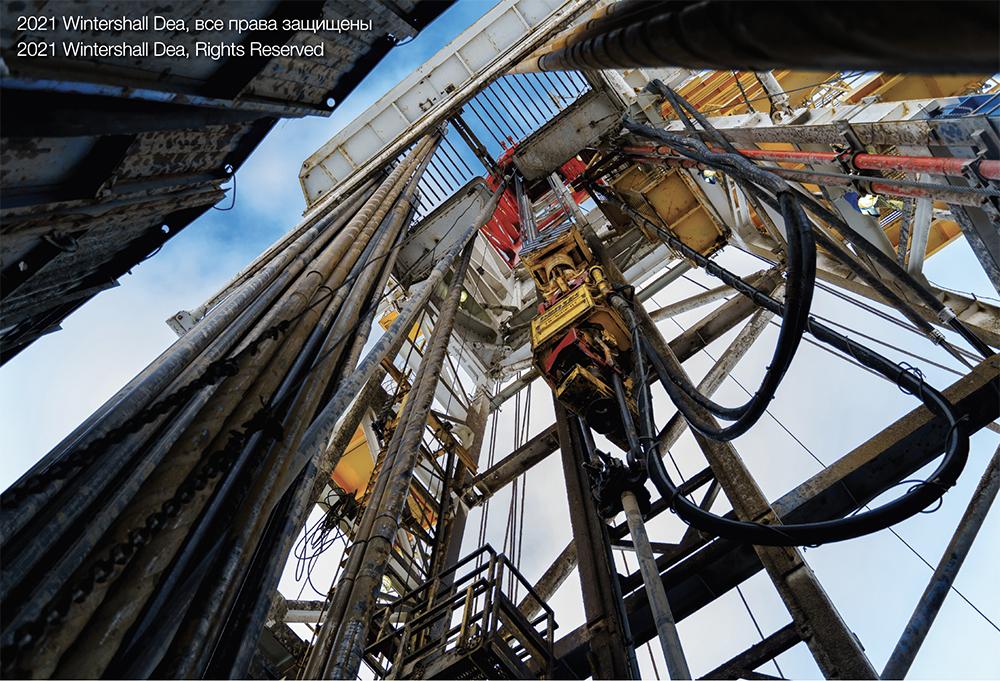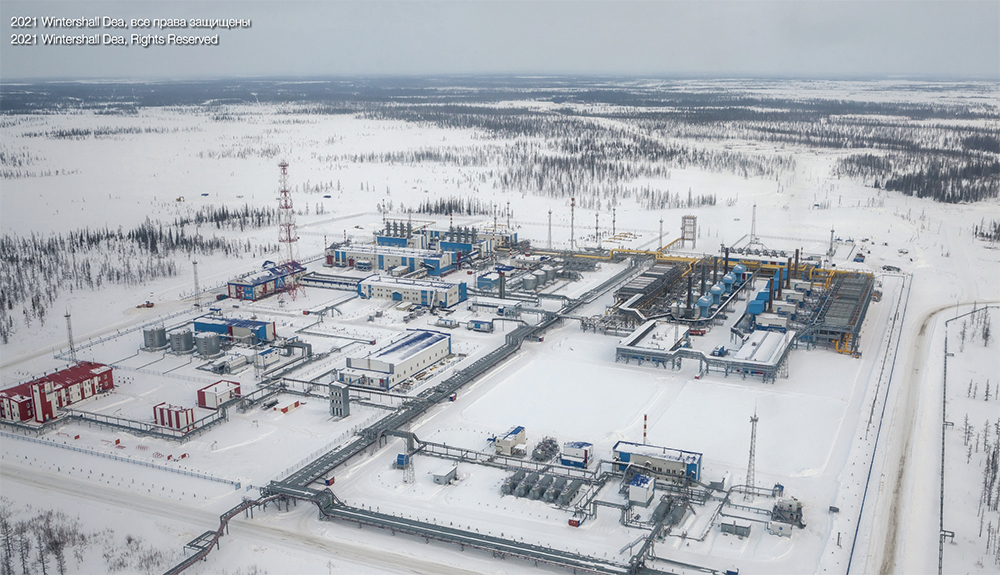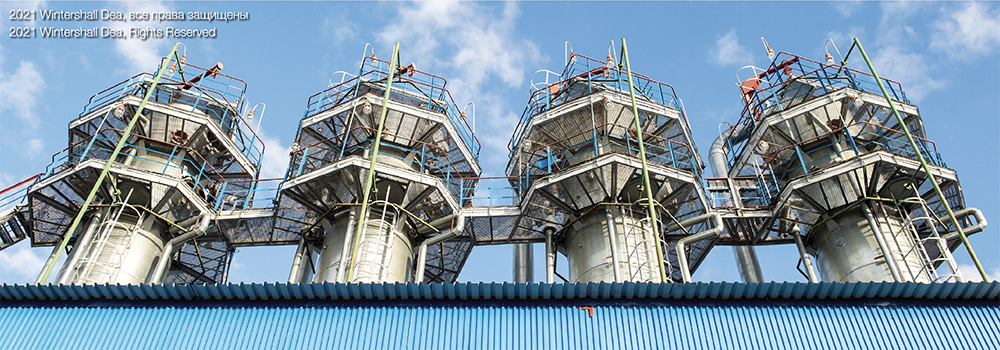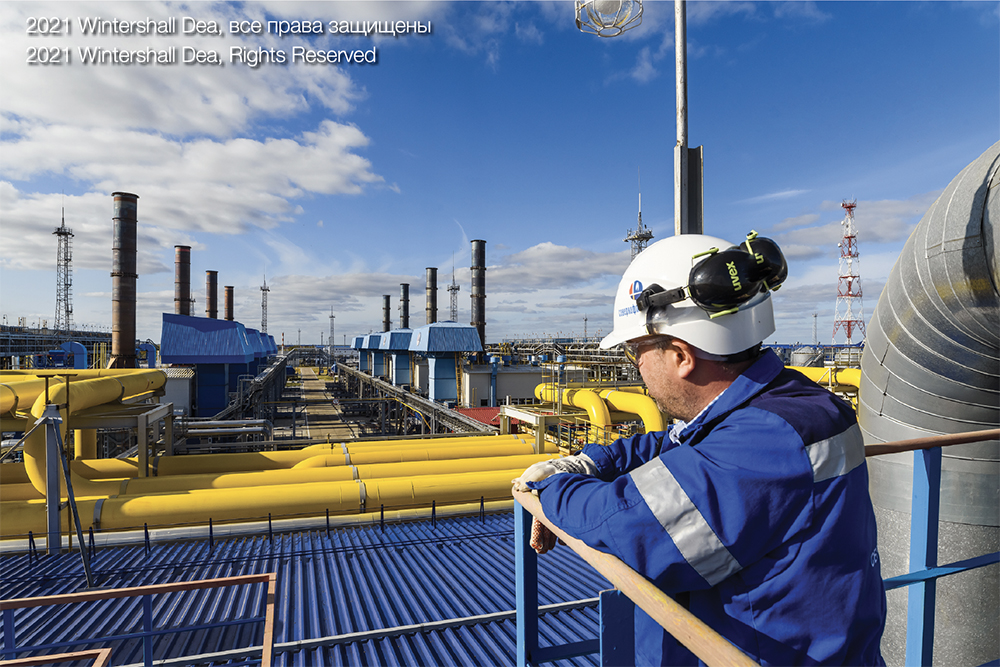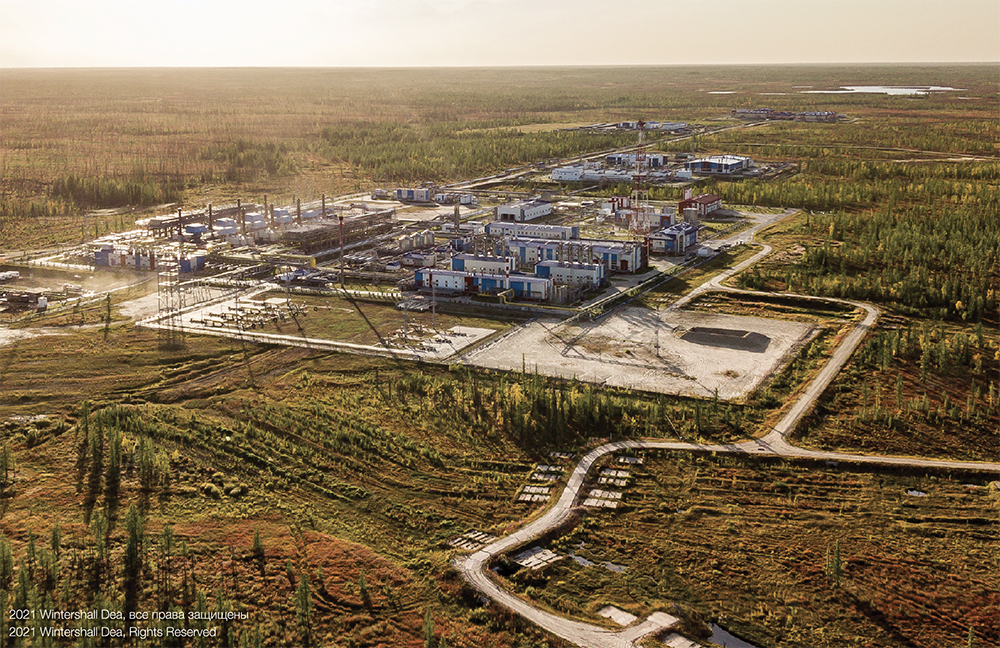ROGTEC Interview: Torsten Murin, Managing Director, Wintershall Dea Russia
Torsten, please could you outline your role and responsibilities within Wintershall Dea?
As Managing Director of Wintershall Dea Russia, I act as the connecting link between the corporate headquarters in Kassel and Hamburg in Germany and the company’s activities in one of our most important core regions which accounts for about half of the company’s total production. In this role, I oversee the implementation of our corporate strategy in Russia, which includes, first and foremost, the performance of the projects in our Russian portfolio in respect to their production and operational targets, and their adherence to our corporate standards.
Wintershall Dea regards transparent communication, and building and maintaining mutual trust with our Russian stakeholders as an essential prerequisite for doing business in Russia. This includes not only the business-related exchange with partner companies and state actors, but also making sure that our company lives up to its commitments as a responsible neighbour and corporate citizen in the regions where we are active. I support and coordinate these processes as well.
To name a few examples: since I assumed the position as Managing Director, at that time of Wintershall, in Russia in 2018, we have accomplished several landmark projects. We have settled into our new office in St. Petersburg after moving it there from Moscow and strengthened our ties in the business community of the city and with local stakeholders. With the merger of Wintershall and DEA in 2019, a brand-new company with new structures, operating models, and business processes was created. We ensured that these were adequately and efficiently implemented also in our Russian business. Last but not least, two significant changes took place in our Russian portfolio this year: Achim Development, our youngest joint venture with Gazprom, went onstream, and we transferred our stake in the Wolgodeminoil joint venture to RITEK. Both developments result from our corporate strategy, which in Russia envisions a strong focus on the production of gas and gas condensate.
Please could you give our readers an overview of Wintershall Dea’s current E&P assets in Russia?
Wintershall Dea has been working together with Russian companies to produce gas and oil for almost 30 years. Our company is currently involved in three onshore projects in the country, all of them in the Yamal-Nenets Autonomous Area. In 2020, the cumulative daily production from our Russian assets amounted to 295 mboe/d, with total 2P reserves of 2,155 mmboe.
The trademark feature of our projects in Russia in partnership with Gazprom is the pioneering development of complex geological formations, which were deemed unsuitable for commercial development just at the beginning of this century. This concerns the Achimov formations of the Urengoyskoye field and the Turonian formations of the Yuzhno-Russkoye field.
At the Urengoyskoye field, one of the world’s largest gas and condensate reservoirs, Achimgaz and Achim Development, two joint ventures between Gazprom and Wintershall Dea, are producing gas and gas condensate from the hard-to-recover Achimov deposits in Areas 1A, 4A and 5A.
Achimgaz, a 50:50 joint venture between Gazprom Dobycha Urengoy and Wintershall Dea, has inscribed itself into the upstream industry history as a pioneer in the development of the Achimov formations: when the company started production from Area 1A in 2008, these were the first Achimov hydrocarbons ever extracted commercially. Achimgaz reached the annual plateau production of around 10 billion cubic meters of natural gas in 2019. By now, it has produced more than 60 billion cubic meters of natural gas and 25 million tons of unstable condensate.
To make the best use of this expertise, Achimgaz was brought on board as the general contractor for the construction activities during the start-up phase of Areas 4A and 5A of the Urengoyskoye field, which Achim Development, another joint venture with Gazprom, is developing. Both license blocks were successfully commissioned this year, which has already significantly boosted Wintershall Dea’s total production. Once fully onstream, Achim Development is expected to deliver an annual plateau production of 14 billion cubic meters of natural gas.
At the Yuzhno-Russkoye field, Wintershall Dea holds a stake in the Severneftegazprom joint venture together with Gazprom and OMV. Production started in 2007 and has so far yielded more than 300 billion cubic metres of natural gas, primarily from the Cenomanian layer. In 2011, Severneftegazprom became the first company in Russia to drill test wells in the complex Turonian formations. For this purpose, the company developed a new, efficient gas extraction technique that it had patented earlier this year. Severneftegazprom has already produced almost 10 billion cubic meters of Turonian gas, most of it this year.
What expansion plans do you have for upstream projects in Russia and will you be looking to acquire your own assets or continue with the JV model within greenfield or brownfield projects?
Our Russian joint ventures are a best-practice example of successful industry partnerships and a strong asset to Wintershall Dea’s portfolio, with their output making a decisive contribution to the overall production. Achim Development is still under development and will increase production in the upcoming years. However, a natural production decline is expected in all our assets within the next years. Therefore, we are looking to make up for these reserves in the midterm perspective in order to continue our successful performance. However, any new project would have to be a good fit for our company, our strategy and core expertise. Each new business opportunity that comes into consideration – regardless of whether it is greenfield or brownfield – is assessed in terms of its compatibility to our strategy and portfolio.
As a Western company, are there any specific challenges you have faced in Russia and how were these solved?
As we look back on three decades of our market presence in Russia, it can definitely be described as a success story. During this time, we have established ourselves as a committed partner and an industry pioneer.
In 1992, our company became one of the first Western European companies in the E&P sector to set up a joint venture with a Russian partner. That was Wolgodeminoil – a joint project with RITEK in southern Russia that was designated as a pilot project for Russian-German energy cooperation by the respective heads of state, Boris Yeltsin and Helmut Kohl. It paved the way for further joint venture projects. When Wintershall expanded its activities to Western Siberia in the early 2000’s, we became industry pioneers again: at that time, there was a lot of uncertainty about the commerciality of natural gas production from the complex geological formations such as the Achimov and Turonian layers. But we always believed that, if we joined forces with our partners, we could solve the technical and logistic challenges. And so we did – prooving the sceptics wrong.
Of course, none of this just fell from the sky, as they say in Russia. Mutual trust and long-term commitments are the foundation of these achievements, and dialogue has always been and remains its key component. Thanks to open, transparent dialogue, we understand the Russian way of doing business. Our projects here have a lifespan of decades and involve huge investments and long-term commitments, and we feel very confident about that. We are also committed to being a responsible corporate citizen by supporting social projects in Novy Urengoy and St. Petersburg.
Looking outside of our projects and at the Russian market as a whole, a reliable regulatory framework is also a crucial factor in doing business in Russia – just like in any country. Here, again, communication, engagement, and dialogue are extremely important if you want to have your interests adequately represented. As a company that has always played an important role in Russian-German economic cooperation, we lend our expertise to energy-related discussions that are taking place on the intergovernmental level between Russia and Germany. The main goal of our activities in this area is to establish a fair and balanced set of rules for companies that are active across borders, and elaborate a step-by-step approach in alignment with our business interests.
What drilling plans do you have for 2022 and 2023 in Russia?
Severneftegazprom is currently wrapping up the drilling campaign in the scope of the first phase of full field development of the Turonian deposits. It includes a total of 88 wells, which, taken together with the 12 wells of the pilot phase, means that the joint venture would be producing gas and gas condensate from 100 Turonian wells. In the start-up phase, we tested the productivity of different well types – subhorizontal ones with multistage fracking and the so-called U-shape wells. After the start-up phase, the U-shape wells were chosen as the main well type for the subsequent 88 wells. It is planned that all Turonian wells drilled so far are to be commissioned in 2022 and start propping up production from the Cenomanian production. At the same time, Severneftegazprom is looking at other geological layers of the Yuzhno-Russkoye field. For instance, it is planned to prepare the technological scheme of the Lower Cretaceous formations.
As for Achimgaz, the joint venture plans to perform infill drilling in Area 1A of the Urengoyskoye field with the aim of increasing its gas and condensate production. Achim Development intends to carry on to ramp up its production by driving forward the full field development of Areas 4A and 5A in the next years. It is planned for the joint venture to achieve production plateau in 2026.
Achimgaz has drilled some technically challenging S shaped wells. Why did you select this pattern and what challenges were faced when drilling these wells?
This well design allows us to enter the reservoir and its transition zone vertically, in order to increase the drilling rate and to reduce drilling risks and cost of works. The vertical entry design also improves hydrocarbons recovery from the low permeable formations. By now, 108 production wells have been drilled in Area 1A, most of them S-shaped – without major complications and producing according to design and plan.
Have you encountered any significant production challenges and how were these resolved?
The development of reservoirs with low permeability like the Turonian formations of the Yuzhno-Russkoye field or the Achimov formations of the Urengoyskoye field require advanced technological solutions such as horizontal drilling and reservoir stimulation to achieve economically stable projects. The development of the Turonian deposits, for example, is unique to Russia, which means that there is a lack in experience from similar fields. Their shallow depth and the low reservoir temperature cause formation of hydrates in the well bore, which can significantly hamper the production performance of the field. To counteract this, mitigation measures like sophisticated methanol treatment and clear understanding of the processes for hydrate forming must be implemented.
What E&P technologies has the company brought into the region? Have you taken any technologies away from Russia to deploy internationally?
For Wintershall Dea, an important platform to discuss innovation and technology is the Scientific Technological Cooperation programme with Gazprom, which goes back three decades. It fosters an exchange of experiences and practices from our international projects with our Russian partners. It is a mutually beneficial learning experience for all parties involved that focuses on the geology and the technical peculiarities to produce hydrocarbons in the northern latitudes. The focus lies on the joint hydraulic fracturing expertise, and the partners are exchanging experiences for permanent improvements and operational solutions.
One of the recent topics was the Integrated Production Modelling implementation in the joint ventures with the aim of optimising, for example, the production from reservoirs with different initial pressure characteristics through the same facilities – such as production from the Turonian and the Cenomanian layers of the Yuzhno-Russkoye field. It can also be deployed to maximise the condensate output from the Achimov deposits. During this process, 4D geomechanical modelling is performed in order to understand compaction and sand production events or to design horizontal wells. Hydrates modelling can help understand production deviations in the Turonian deposits and figure out the right mitigation measures to fulfil the production plans.
Furthermore, Achim Development has launched a remote drilling monitoring for production drilling in Areas 4A and 5A of the Urengoyskoye field. To optimise the reservoir operation and identify bottlenecks, the operational data is to be connected to the thermodynamic simulation tool. To reduce the disposal of methanol, different separation and recovery methods are being evaluated. To utilise different pressure regimes in flowlines, it is planned to install ejector technology to increase the production rates and reduce the required compression energy.
What digital projects are you currently working on in Russia and what impact will they have on your operations?
The Severneftegazprom joint venture is a pioneer of the Russian oil and gas industry not only as the first company to develop the Turonian deposits, but also when it comes to digitalisation and artificial intelligence. The joint venture partners are currently developing a so-called Digital Twin – a dynamic digital model of the reservoir and the surface facilities designed to enhance the efficiency of gas production from the Cenomanian and Turonian deposits and optimise operational decisions. The beta testing phase is scheduled to begin in the near future. For Wintershall Dea, this is the third Digital Twin project in its portfolio, following Mittelplate and Brage, two offshore oil production platforms in the German and Norwegian sections of the North Sea, respectively, and could become a trailblazer for Russia.
With the need to protect the environment and to lower emissions, what strategy does Wintershall Dea have to transition to a Net Zero Future and what technologies will you look to more specifically in Russia to reduce your emissions and waste?
A year ago, Wintershall Dea set its own climate targets in order to produce natural gas and crude oil even more cleanly in the future. By 2030, we intend all our upstream activities to be climate-neutral. To achieve this, as a first step we want to significantly reduce our direct greenhouse gas emissions from natural gas and crude oil production as well as the indirect emissions resulting from energy consumption of our production facilities (Scope 1 and 2). For the non-operated projects, this will be done in coordination with our partners and in accordance with Wintershall Dea’s respective project participation. To this end, the strict emissions management is to be further expanded through greater energy efficiency. We will complement this with investments in nature-based compensation solutions – such as forest protection and reforestation. Beyond 2030, we will focus on reducing emissions associated with the end use of our products through the development and deployment of new technologies (Scope 3). Among other things, this includes our involvement in hydrogen and carbon capture and storage (CCS) projects.
To reduce emissions from our operations, our Russian assets have the best starting conditions, as they currently have the lowest specific CO2 emissions in the entire Wintershall Dea portfolio. To keep these low specific values and further decarbonise our business with the help of innovative technologies, we are now developing an emissions reduction roadmap together with our partners. During this process, we are reviewing all installed and planned facilities as well as the operational procedures and identifying optimisation measures which will be implemented once we have conducted a feasibility study. The same goes for any potential new assets – these will be screened in respect to their potential carbon footprint as one of the main decision-making criteria.
Part of the company’s strategy is to look for lower carbon projects – how will/does this influence your current Russian asset portfolio?
Part of Wintershall Dea’s emissions reduction strategy is to focus on reservoirs where hydrocarbons extraction can be carried out with particularly low emissions. Compared to the oil and gas industry as a whole, all of our joint ventures in Russia are relatively young, which means that they operate very modern production facilities. Thanks to excellent field properties in terms of maturity and gas composition, as well as state-of-the-art, high-performance equipment, the carbon footprint of these projects is already quite low. And as I said, we are currently working on new solutions to further reduce emissions from our operations there. Therefore, Achimgaz, Achim Development and Severneftegazprom are very well positioned to face the challenge of decarbonisation and will continue to play a very important role in our portfolio.
The company recently announced they will invest in a hydrogen pilot project with VNG AG – could you explain more to our readers about this turquoise hydrogen project? Does the company have any hydrogen plans in Russia?
Wintershall Dea and VNG AG cooperate closely in the field of hydrogen and are planning to build a facility to produce climate-friendly turquoise hydrogen in Germany as a first step. The thermal methane pyrolysis process used by HiiROC, in which both companies recently invested, is to be deployed there and further developed for a specific application together with the facility operator. According to current plans, the pilot facility is expected to go into operation in 2023 and have a nominal capacity of 400 kg of hydrogen per day.
Russia has a lot of potential when it comes to hydrogen – both as a supplier of natural gas as the feedstock for blue or turquoise hydrogen production in Europe, or potentially as an exporter of hydrogen. According to a study by Hydrogen4EU, by 2050, in the Technology Diversification pathway, more than half of Europe’s hydrogen imports could come from Russia.
Just like our Russian partner Gazprom, Wintershall Dea is collaborating with different scientific institutions on projects in the development of the methane pyrolysis technology to produce turquoise hydrogen from natural gas. Our companies are constantly discussing the prospects of hydrogen with each other and how we can combine our capabilities to use the market potential. This exchange takes place both on the executive level and in the framework of the Scientific-Technical Cooperation programme.
Wintershall Dea is working on Carbon Capture and Storage (CCS) initiatives in Denmark, could you tell our readers about this? What CCS potential is there in Russia for Wintershall Dea?
Carbon capture and storage has a lot of potential for our industry. Depleted oil and gas reservoirs, both in Russia and in Europe, are increasingly viewed as promising CO2 storage facilities. Gas companies, with their experience and know-how in subsoil operations, reservoir management and gas transport infrastructure, can make an important contribution to the development of this technology.
Wintershall Dea is a participant of the Project Greensand CCS Consortium in Denmark. The project has recently started the pilot injection phase. By 2030, it may reach the annual storage capacity of 8 million tonnes of CO2. We are also intensively discussing the potential of carbon capture and storage with our partner Gazprom. Wintershall Dea is also cooperating with the Regensburg University of Applied Sciences in Germany to explore how existing natural gas pipelines in the southern part of the North Sea can be used for future CO2 transport. Initial results suggest that the offshore pipelines could indeed be safely and efficiently repurposed for transport of liquid CO2. Such projects are great examples of how companies can utilise their expertise and assets to tap into new business areas and contribute to the decarbonisation of the economy.
In Russia, we are actively investigating the potential deployment of CCS technologies to lower the emissions from our joint venture operations. Here, we are in the process of alignment with various partners to identify and later execute CCS opportunities in various regions.
What do you think the future holds for Wintershall Dea in Russia?
With the development of and planned production increase from the Achimov deposits of the Urengoyskoye field and the Turonian deposits of the Yuzhno-Russkoye field, we have many more important project milestones ahead of us – but also a lot of work that will keep us busy in the next years. Our three joint ventures in Russia – Severneftegazprom, Achimgaz and Achim Development – will continue to contribute to meeting Russia’s and Europe’s energy demand. At the same time, together with our partners we will continue developing innovative solutions to increase the production efficiency, reduce the operating costs, and lower the carbon footprint of our projects. The Russian gas industry as an experienced supplier of natural gas and in future, hopefully, a pioneer in hydrogen development, will play an important role in the energy transition both in Europe and in Russia. Our Russian projects will remain a crucial pillar of our portfolio. 2022 will see the 30th anniversary of our company’s entry into the Russian market. After three decades of successful partnership, it is safe to say: we are here to stay.

